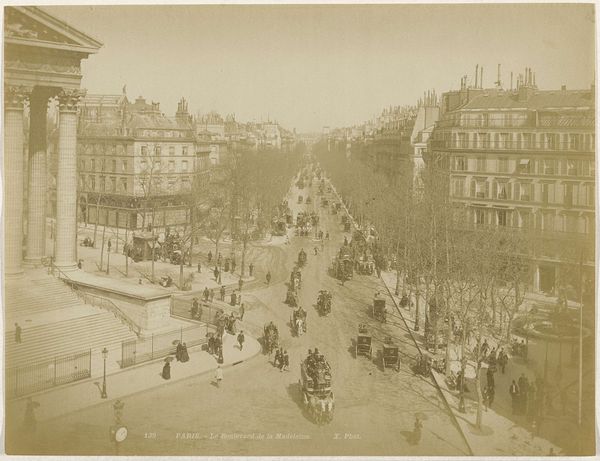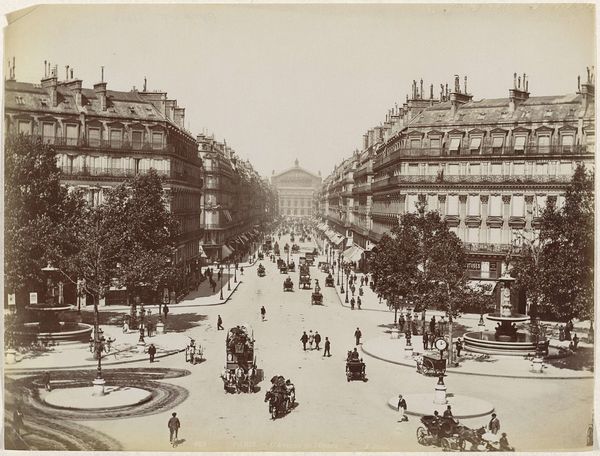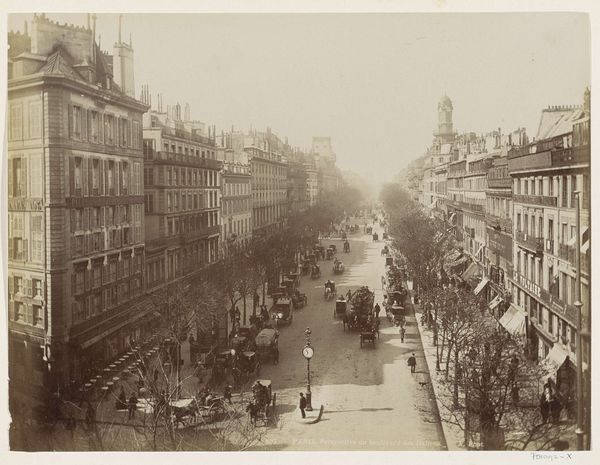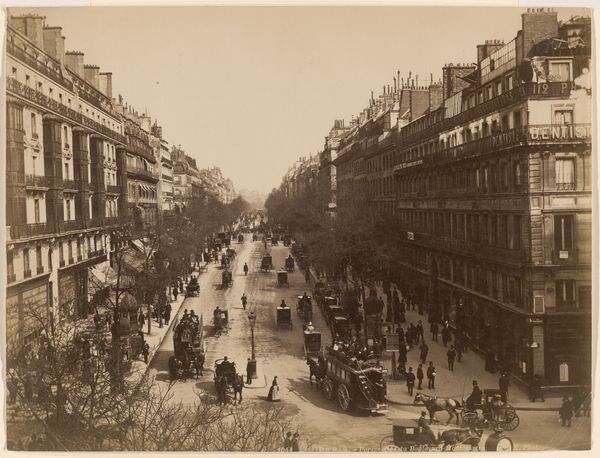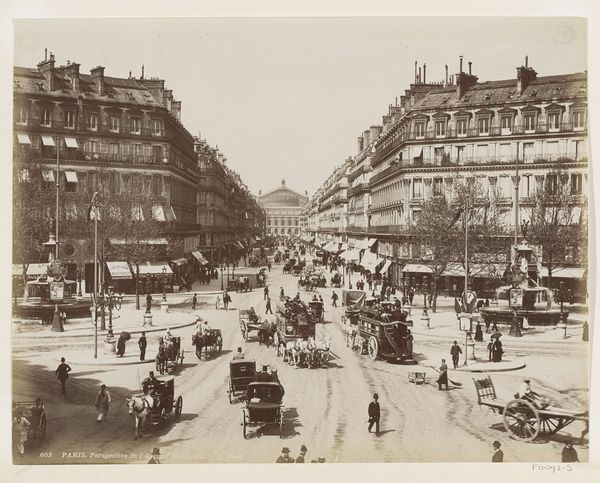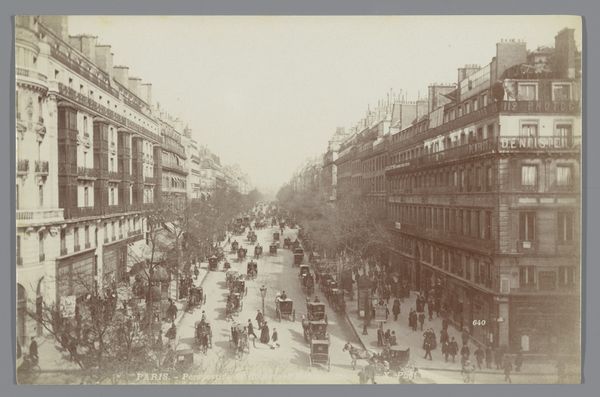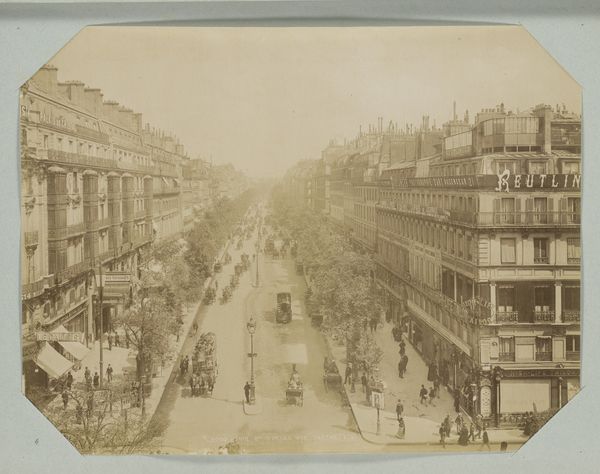
Boulevard de la Madeleine in Parijs met voorbijgangers, paardenkoetsen en een paardentram c. 1880 - 1900
0:00
0:00
Dimensions: height 205 mm, width 268 mm
Copyright: Rijks Museum: Open Domain
Editor: This photograph, titled "Boulevard de la Madeleine in Paris with passers-by, horse-drawn carriages and a horse tram," was taken sometime between 1880 and 1900. It really captures a bustling Parisian street scene, doesn't it? The Beaux-Arts architecture looms in the background, with all these horse-drawn carriages hinting at a society in transition. How would you interpret this work, considering the time it was created? Curator: It's a compelling visual document, indeed. To interpret it, we must consider the social and political undercurrents of the late 19th century. Paris was a city undergoing massive urban redevelopment, largely driven by political motives. Consider the wide boulevard itself – part of Haussmann’s plan to modernize the city, ostensibly for hygiene and traffic, but also to prevent barricades and popular uprisings. Does seeing it that way shift your understanding? Editor: Absolutely, the wide boulevard, the organized traffic, suddenly seems less about progress and more about control. And the presence of both horse-drawn carriages and a horse tram seems to highlight the anxieties and promises of technological advancement, right? Curator: Precisely. It highlights the tension between tradition and modernity, a tension that permeated Parisian society at the time. The photographer, capturing this "slice of life," unknowingly documents a power structure in motion. Who controlled the means of transportation, who had access to this modernizing city – these become critical questions. What's particularly fascinating is that this is street photography, hinting at democratizing artistic documentation of every-day life. Editor: That's a fantastic point. By choosing this specific location and capturing these seemingly mundane activities, the photographer reveals the subtle power dynamics shaping Parisian life. I now see it’s more than just a pretty picture! Curator: Exactly! By examining its historical context, we reveal photography’s place within political and social discourse, opening up fresh perspectives. Editor: I appreciate learning how art history and social history inform our understanding of visual representation. Curator: Likewise. Considering the political background truly enriches the appreciation of this historical capture.
Comments
No comments
Be the first to comment and join the conversation on the ultimate creative platform.
